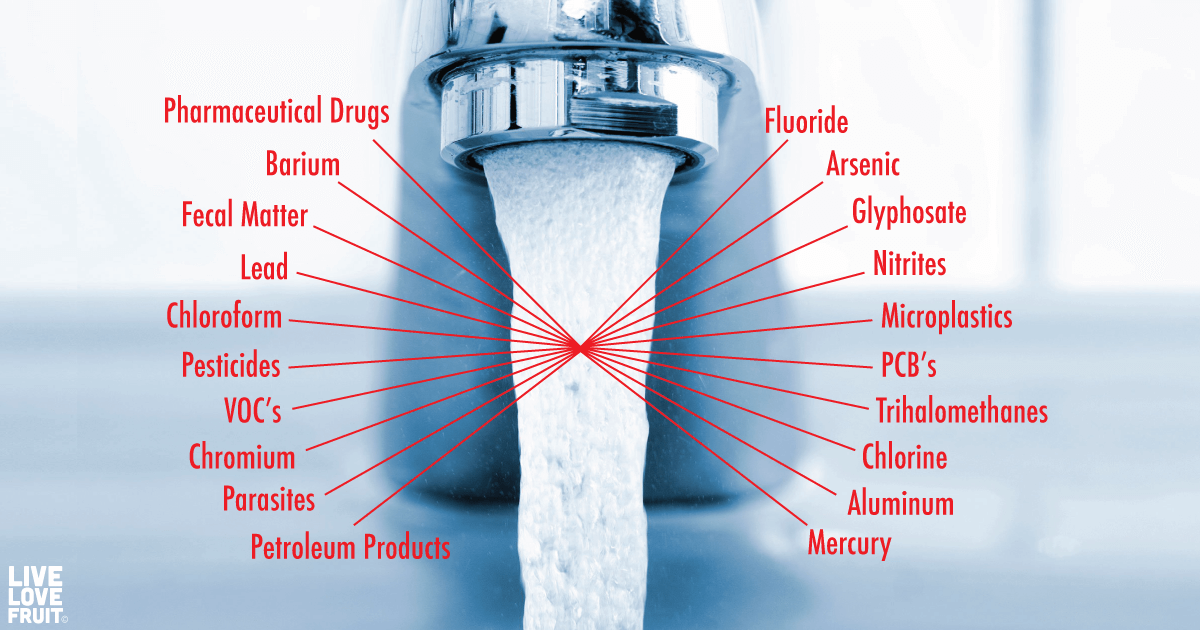Forever Chemicals In US Tap Water: A Public Health Crisis Affecting Millions

Table of Contents
What are Forever Chemicals (PFAS)?
PFAS are a group of man-made chemicals characterized by their exceptional resistance to heat, oil, and water. This very property, which made them incredibly useful in various applications, is also what makes them so dangerous. PFAS are incredibly persistent in the environment, meaning they don't break down easily, and they bioaccumulate in the human body, meaning they build up over time with repeated exposure. This accumulation can lead to significant health problems.
PFAS have been widely used in numerous products, including:
- Non-stick cookware (Teflon)
- Food packaging
- Firefighting foam (a major source of contamination)
- Stain-resistant fabrics and carpets
- Certain types of cosmetics
Key characteristics of PFAS:
- Man-made: These chemicals are not naturally occurring.
- Persistent: They remain in the environment for extended periods.
- Bioaccumulative: They accumulate in living organisms, including humans.
- Potentially toxic: Exposure has been linked to various health issues.
The widespread use of PFAS began in the 1940s, and only recently have the potential health risks become fully understood, leading to growing concern and a push for stricter regulations.
Sources of PFAS Contamination in US Tap Water
PFAS contamination of US tap water stems from various sources, many linked to industrial activities and military operations. These sources include:
- Industrial discharges: Manufacturing facilities that use PFAS in their processes can release them into the environment.
- Military bases: Firefighting foams containing PFAS have historically been used extensively on military bases, leading to widespread contamination of surrounding soil and water.
- Landfills: PFAS can leach from landfills containing waste products containing these chemicals.
- Wastewater treatment plants: These plants may not effectively remove PFAS from wastewater, leading to contamination of treated effluent and nearby water bodies.
Specific industries heavily implicated in PFAS pollution include:
- Chemical manufacturing
- Textile production
- Electronics manufacturing
Examples of contamination events:
- The contamination of drinking water supplies near military bases across the country.
- Industrial discharges polluting rivers and groundwater sources.
- The discovery of high levels of PFAS in municipal water systems serving various communities.
Geographical areas with particularly high levels of PFAS contamination are often located near these industrial sites and military installations.
Health Effects of PFAS Exposure via Tap Water
Exposure to PFAS through contaminated tap water poses significant health risks. Scientific research has linked PFAS exposure to a range of adverse health effects, including:
- Liver cancer: Increased risk of developing liver cancer.
- Kidney cancer: Elevated risk of kidney cancer.
- Immune deficiency: Weakened immune response and increased susceptibility to infections.
- Thyroid issues: Disruptions in thyroid hormone production.
- Developmental problems in children: Reduced birth weight, delayed development, and other developmental issues.
Studies and research findings:
Numerous epidemiological studies have provided compelling evidence demonstrating a correlation between PFAS exposure and these health problems. The level of exposure often dictates the severity of the health consequences.
Vulnerable populations:
Pregnant women, children, and the elderly are particularly vulnerable to the harmful effects of PFAS exposure, due to their developing or compromised immune systems.
Current Regulations and Efforts to Address PFAS Contamination
Current federal and state regulations regarding PFAS in drinking water vary significantly, and many experts agree that they are insufficient to protect public health. The EPA has established health advisories, but these are not legally enforceable standards. Some states have implemented stricter regulations, setting maximum contaminant levels (MCLs) for specific PFAS compounds.
Effectiveness of current regulations:
The effectiveness of existing regulations is highly debated. The lack of uniform national standards and the slow pace of regulatory action are major concerns.
Mitigation strategies:
- Granular activated carbon (GAC) filtration: A widely used method for removing PFAS from water.
- Ion exchange: Another effective technology for PFAS removal.
- Foam fractionation: A specialized technique for removing PFAS from contaminated water.
Ongoing research is focused on developing more efficient and cost-effective PFAS treatment technologies.
What You Can Do to Protect Yourself from Forever Chemicals
While the responsibility for addressing widespread PFAS contamination rests primarily with government agencies and industry, individuals can take proactive steps to reduce their exposure:
- Invest in a high-quality water filter: Look for filters certified to remove PFAS.
- Test your water: Have your tap water tested for PFAS to determine the level of contamination.
- Contact your local authorities: Report any suspected PFAS contamination to your local health department or environmental agency.
- Consider alternative water sources: Bottled water or a well (if you have access to one and it is tested and free of PFAS) can provide a safer alternative.
Steps to reduce exposure:
- Use a whole-house water filter system.
- Employ a point-of-use filter for drinking and cooking water.
- Avoid using non-stick cookware that may contain PFAS.
Advocate for stricter regulations and increased government action at the local, state, and federal levels. Your voice can make a difference in demanding accountability and safer drinking water for all.
Conclusion
The presence of forever chemicals (PFAS) in US tap water constitutes a significant public health crisis affecting millions. The persistent nature of these chemicals, their widespread use, and their links to serious health problems demand immediate and comprehensive action. Current regulations are often inadequate, highlighting the urgent need for stronger federal and state standards, improved treatment technologies, and greater accountability for industries responsible for PFAS pollution. Take action against forever chemicals today. Protect yourself from forever chemicals by taking the steps outlined above and by demanding change from your elected officials. Learn more about forever chemical contamination in your area and join the fight for cleaner, safer water for everyone.

Featured Posts
-
 Cody Poteets Spring Training Abs Challenge Victory A Chicago Cubs Story
May 15, 2025
Cody Poteets Spring Training Abs Challenge Victory A Chicago Cubs Story
May 15, 2025 -
 La Liga Announces Uk And Ireland Rights Tender Process
May 15, 2025
La Liga Announces Uk And Ireland Rights Tender Process
May 15, 2025 -
 Ovechkin Sravnyalsya S Leme Po Golam V Pley Off N Kh L Rekordniy Sezon
May 15, 2025
Ovechkin Sravnyalsya S Leme Po Golam V Pley Off N Kh L Rekordniy Sezon
May 15, 2025 -
 Cassie Venturas Testimony Diddy Sex Trafficking Trial Details
May 15, 2025
Cassie Venturas Testimony Diddy Sex Trafficking Trial Details
May 15, 2025 -
 Michael Venom Page Predicts Paddy Pimbletts Win Over Michael Chandler
May 15, 2025
Michael Venom Page Predicts Paddy Pimbletts Win Over Michael Chandler
May 15, 2025
